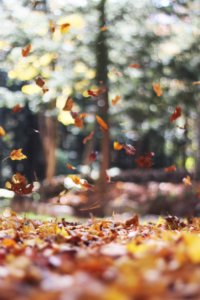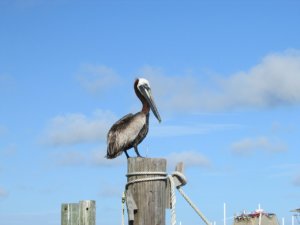It’s Fall Y’all: Decoding How Companies Brand a Season
Published on November 8, 2017, at 1:17 p.m.
by Brooke Bailey.

There are a few things in life that are certain: death, taxes and the slight shock of walking into a grocery store and suddenly being surrounded by pumpkins and the overwhelming smell of cinnamon broomsticks.
For most people, fall means cozy sweaters, cooler weather and baked goods spiced with cinnamon and nutmeg. For some businesses, it means major profits. For decades, corporations have wielded their power to create and change holidays, but what about entire seasons? Their control doesn’t just include Halloween; it seems that companies like Starbucks, Bath & Body Works and Old Navy have laid their claims on the stretch of time from late September through early December called “fall.”
But how did we get to the point where the annual introduction of the Pumpkin Spice Latte at Starbucks is used to signal the change of the season?
History
Fall has been around for a long time; people have been eating pumpkin pie, wearing cable-knit sweaters and drinking hot apple cider for centuries. So what changed? Social media altered how people live their lives; it’s made it easier than ever to keep up with the Joneses.
Fourteen years ago, Starbucks introduced the Pumpkin Spice Latte. The drink has become a cultural phenomenon and the national symbol of the start of fall. It also started a “pumpkin spice” craze, which is where corporate entities (especially food producers) jumped on board. For example, a stroll down the breakfast food aisle in a grocery store reveals that nearly every brand has introduced its own pumpkin-spice-flavored product.
I wish…I wish for a guitar. And four more months of fall. And a roller skate. Oh, and one of those standing desks…#HBD2ME pic.twitter.com/RM9OsZZruZ
— Pumpkin Spice Latte (@TheRealPSL) October 5, 2017
“This Pumpkin Spice Latte trend has really taken on a life of its own,” said Cynthia Maddox, senior account manager at Lewis Communications (link). Maddox said she recently even bought pumpkin-spice-flavored dog treats.
As to how consumers are primed for ringing in the new season, Maddox said it’s all in the strategy. Year after year, customers look forward to the re-release of certain seasonal products, which leads to higher levels of engagement between companies and consumers.
This isn’t the first time “corporate America” took something innocent and turned it into mandatory, money-spending time. Even within this season, you can see how candy companies have transformed Halloween. In just the last few decades, All Hallows Eve went from a largely nonexistent holiday to a day that literally revolves around the accumulation of candy. It’s easy enough to take this logic and apply it to most of our other holidays: Christmas, Valentine’s Day, Easter – all progressed by large corporations.
But those are only a few specific days out of the year; how did companies transform the fall season so much, and why do consumers look forward to it so ardently?
The fall color palette
Color psychology may play into the love of the season, noted Charlotte Wegrzynowski, an art professor at The University of Alabama.
“It’s almost cyclical,” Wegrzynowski said, “with darker, muted colors and more greys in the winter and pastel colors in the spring. A change in color often signals a change in season.”

Wegrzynowski added that the next closest seasonal-color association would probably be spring,but not to the same extent seen in the fall.Those warm shades of autumn have a larger impact on the human brain than one may think. The leaves changing from green to various hues of orange aren’t just pretty to look at; they also stimulate excitement in the brain. Thinking about the leaves changing can also be an effective stress-relief tactic and bring up fond childhood memories.
This is why color-psychology-driven retail marketing works. The shelves at most stores turn orange in the fall just like the leaves on the trees, because companies know that’s an effective way to drive sales in what, by any other rationale, should be an overall slow season for retail.
Retail and food companies aren’t the only ones to alter their communication strategies in autumn, however. The tourism industry operates in seasonal cycles all year, and fall is no different, but maybe not in the way you think.
Tourism
Destination locations that rely heavily on summer vacationers shift gears and start pumping out messaging to attract people in their off-season, said Maddox. “I’m getting an email every other day from Gulf Shores and Orange Beach about something going on, which I didn’t get over the summer because why would they need one more person at the beach?”

Those traditionally warm-weather locales also switch their target demographics from young adults and families to wealthier, adult couples with no children, also known as snowbirds, in the fall and winter.
So what about the future? Maddox said the trend will probably stick around for a while.
“Someone always comes up with a bigger and better idea, and eventually one will move in and overtake fall,” Maddox explained.
But for now, enjoy those pumpkin-spice Cheerios and cable-knit sweaters, and find ways to work some orange into your color palette, because it might just do your business some good.




